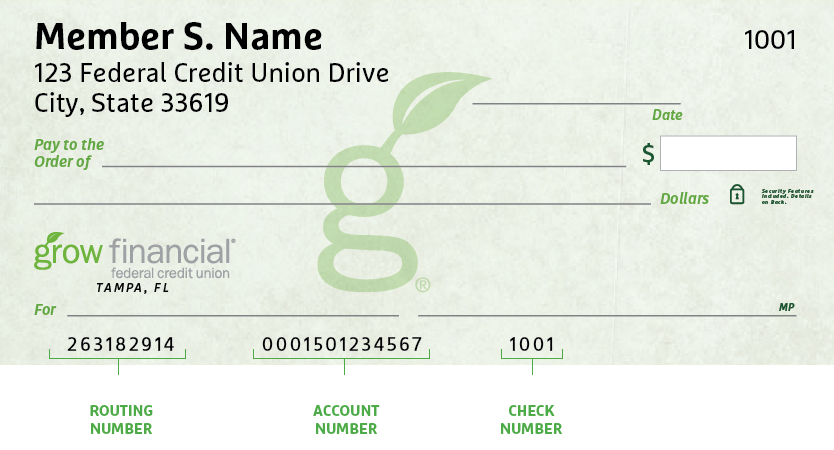- Personal
- Membership
- Membership
- Rates & Fees
- Checking
- Checking
- Personal Loans
- Personal Loans
- Wealth Management
- Investment Services
- Life Events
- Trust and Will
- Financial Advisors
- Business
Life
Events
Whether you’re looking to start a family or dreaming of retirement, planning plays an important role in achieving your financial goals. We’ve pulled together some resources relevant to help you no matter where you are in the journey. Still have questions? Grow has contracted with CUSO Financial Services, L.P. (CFS) to provide investment services, and your CFS Financial Advisor will help you build a plan that meets your needs.
Family Planning
Education Calculator
The projected value of college savings does not take into account federal or state income taxes, or investment fees and expenses, all which may vary depending on the savings vehicle(s) selected. Earnings are compounded monthly. This is a hypothetical example and is not intended to reflect the actual performance of any specific investment, nor is it a guarantee of future value. The projection assumes a fixed annual return; the rate of return on your actual investment portfolio will be different, and will vary according to actual market performance. This is particularly true for long-term investments. It is important to note that investments offering the potential for higher rates of return also involve a higher degree of risk to principal. All investments are subject to market fluctuation, risk, and loss of principal.
College savings, if any, are mapped proportionately against each year of college. Savings not used in a given year continue to earn interest at the rate selected.
The shortfall is the difference between the projected cost of college (adjusted by the percentage of costs you want to fund) and the projected value of college savings.
If there is a shortfall, the calculator determines both the extra monthly savings needed (in addition to any monthly savings currently being made) and the lump-sum amount needed today to eliminate the shortfall. If there is a surplus, this number represents the amount of money you’ll have left over after paying all college costs.
Life Insurance Calculator
To arrive at an estimate of additional insurance coverage needed, this calculator determines the present value lump-sum amount needed to support your survivors over the number of years indicated at the estimated inflation rate and rate of return. This calculation is based on the estimated monthly living expenses of survivors, less monthly replacement income from other sources. If monthly replacement income from other sources exceeds the estimated monthly living expenses of survivors, the estimated monthly expenses of survivors is not factored into the calculation.
The calculator adds the amount needed to provide ongoing income to survivors to the amount of cash needed for one-time expenses to help determine total cash need. Cash and liquid savings, other liquid assets available to pay off debt, and current life insurance proceeds available are subtracted from total cash need to determine additional life insurance need.
This calculator cannot account for all financial considerations, and should be used only as a general guide. Discuss your life insurance needs with a financial professional.
This illustration assumes a fixed annual rate of return; the rate of return on your actual investment portfolio will be different, and will vary over time, according to actual market performance. This is particularly true for long-term investments. It is important to note that investments offering the potential for higher rates of return also involve a higher degree of risk to principal. All investing involves risk, including the possible loss of principal, and there can be no assurance that any investment strategy will be successful.
The cost and availability of life insurance depend on factors such as age, health, and the type and amount of insurance purchased. There are expenses associated with the purchase of life insurance. Policies commonly have mortality and expense charges. In addition, if a policy is surrendered prematurely there may be surrender charges and income tax implications.
Retirement Planning
February 22, 2023
Investing Basics: What You Need to Know Before Getting Started
Understanding the investing basics, including risk tolerance, is essential for anyone looking to build wealth and reach their financial goals. Read Full Article
July 15, 2022
Retirement Planning 101: Understanding the Basics
Let’s break down some retirement planning basics: the value of time, retirement expectations and savings vehicles. Read Full Article
May 18, 2022
Risk Management: Five Things to Do for Your Retirement Savings Plan
Investing in your employer-sponsored retirement plan? Think about including these five steps as part of your risk management strategy. Read Full Article
May 9, 2022
Risk Management and Your Retirement Plan: Introducing Riskalyze
Knowing your personal risk tolerance is important when investing for retirement. We offer Riskalyze to help investors with risk management. Read Full Article
July 8, 2021
Understanding Compound Interest: Making Time Work for You
You’ve most likely heard us say it before, and we can promise we’ll remind you again: start saving for retirement as early as possible. Even Read Full Article
Retirement Calculator
Additional amounts invested are assumed to be made at the end of each month (for monthly contributions) or year (for annual contributions).
Earnings are compounded monthly.
This calculator does not take into account the effect of federal or state taxes, or any investment fees or expenses.
This is a hypothetical example, intended for illustration purposes only; it does not reflect the performance of any specific investment or portfolio.
Non-deposit investment products and services are offered through CUSO Financial Services, L.P. (“CFS”), a registered broker-dealer (Member FINRA/SIPC) and SEC Registered Investment Advisor. Products offered through CFS: are not NCUA/NCUSIF or otherwise federally insured, are not guarantees or obligations of the credit union, and may involve investment risk including possible loss of principal. Investment Representatives are registered through CFS. The Credit Union has contracted with CFS to make non-deposit investment products and services available to credit union members. For specific tax advice, please consult a qualified tax professional.
How to Find Your Routing & Account Numbers
When you make a payment online, by phone or on a mobile device, you may be asked for our routing number and your checking account number. Credit unions and banks use these numbers to identify accounts and make sure money gets where it’s supposed to be. You’ll also need to provide your routing and checking account numbers for:
- Direct deposits
- Electronic checks
- Military allotments
- Wire transfers
Where to Find Your Routing & Checking Account Numbers
Your personal checks include both our routing number and your account number, as shown on the Grow check example below.

Don’t have a Grow check? No worries.
Visit any Grow store and ask for a Direct Deposit Form. It lists both your routing number and checking account number.
Making a Loan Payment
When it comes to making payments, we try to make it as painless as possible to pay your loan every month. We have several different ways to pay, including convenient online options.
Pay Online
You have two ways to pay online by transferring funds from another bank or credit union.
- Grow Online Banking (Preferred payment method for any loan)
This is the simplest way to pay your loan. You can make one-time payments or set up automatic recurring payments in Grow Online Banking. Once you log in, select “Transfer/Payments” from the menu. If you’re not enrolled in Grow Online Banking yet, you can set up your account in just a few minutes.
Log In
- Debit Card or ACH (Available for auto, personal loans and HELOCs)
Note: ACH and debit card payments are not available for credit cards or most mortgages, except HELOCs.
We accept ACH payments with no additional fees or Mastercard® and Visa® debit cards with a convenience fee of $4.95. To get started with an online ACH or debit card payment, select Pay Now below.
Pay Now
Pay by Mail
You can also pay any Grow loan by check through the mail. Please remember to include your account number and Grow loan number on the check. (For credit card payments, please do not write your 16-digit credit card number on the check, which can cause a delay in processing the payment.)
Address for auto, credit card, personal loan and HELOC payments:
Grow Financial Federal Credit Union
P.O. Box 75466
Chicago, IL 60675-5466Address for personal first or second mortgages and home equity payments:
Grow Financial Federal Credit Union
P.O. Box 11733
Newark, NJ 07101-4733You Are About To Leave GrowFinancial.org
At certain places on this site, there are links to other websites. Grow Financial Federal Credit Union does not endorse, approve, represent, certify or control those external sites. The credit union does not guarantee the accuracy, completeness, efficacy, timeliness or accurate sequencing of the information contained on them. You will not be represented by Grow Financial Federal Credit Union if you enter into a transaction. Privacy and security policies may differ from those practiced by the credit union. Click CONTINUE if you wish to proceed.





